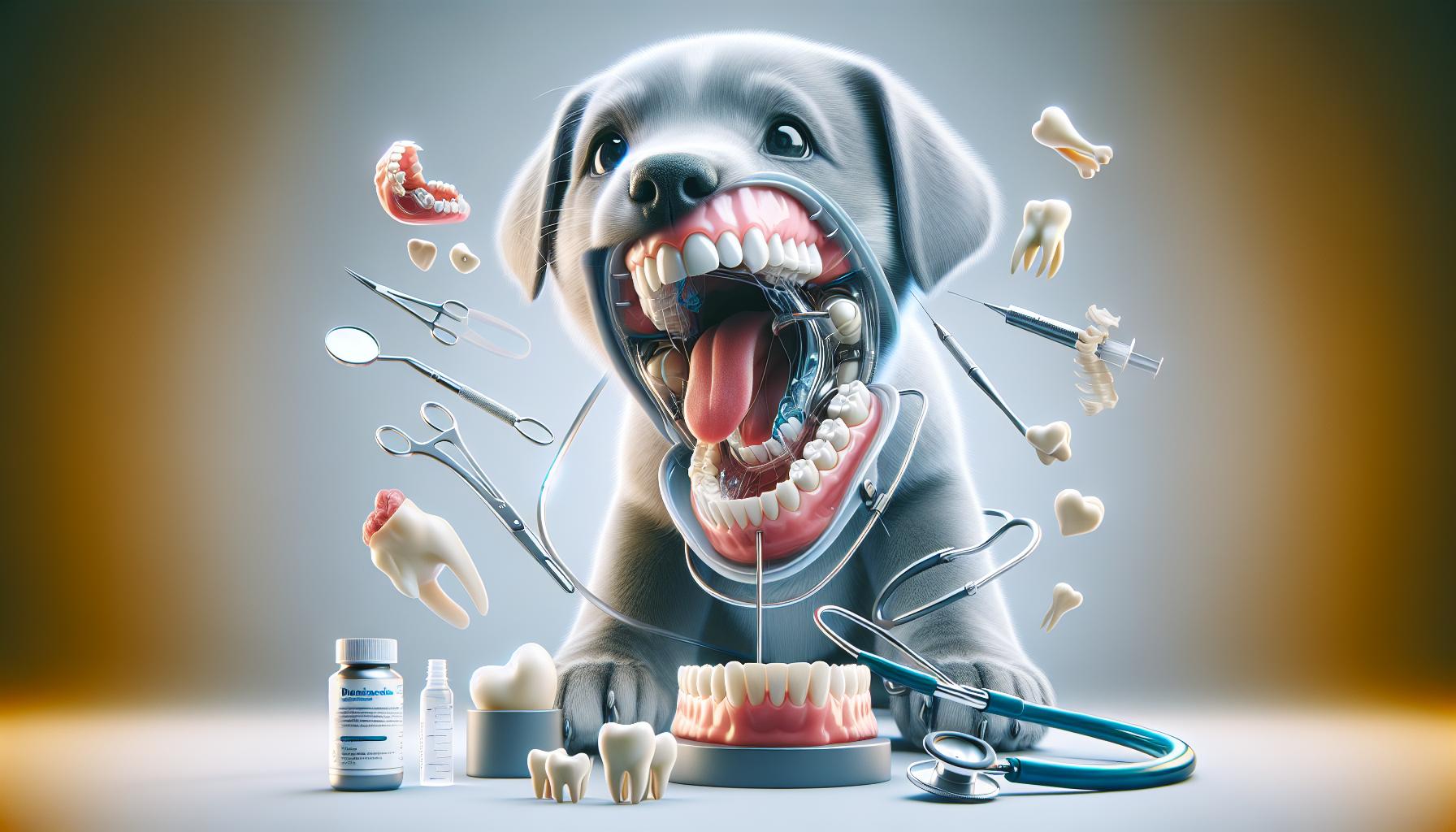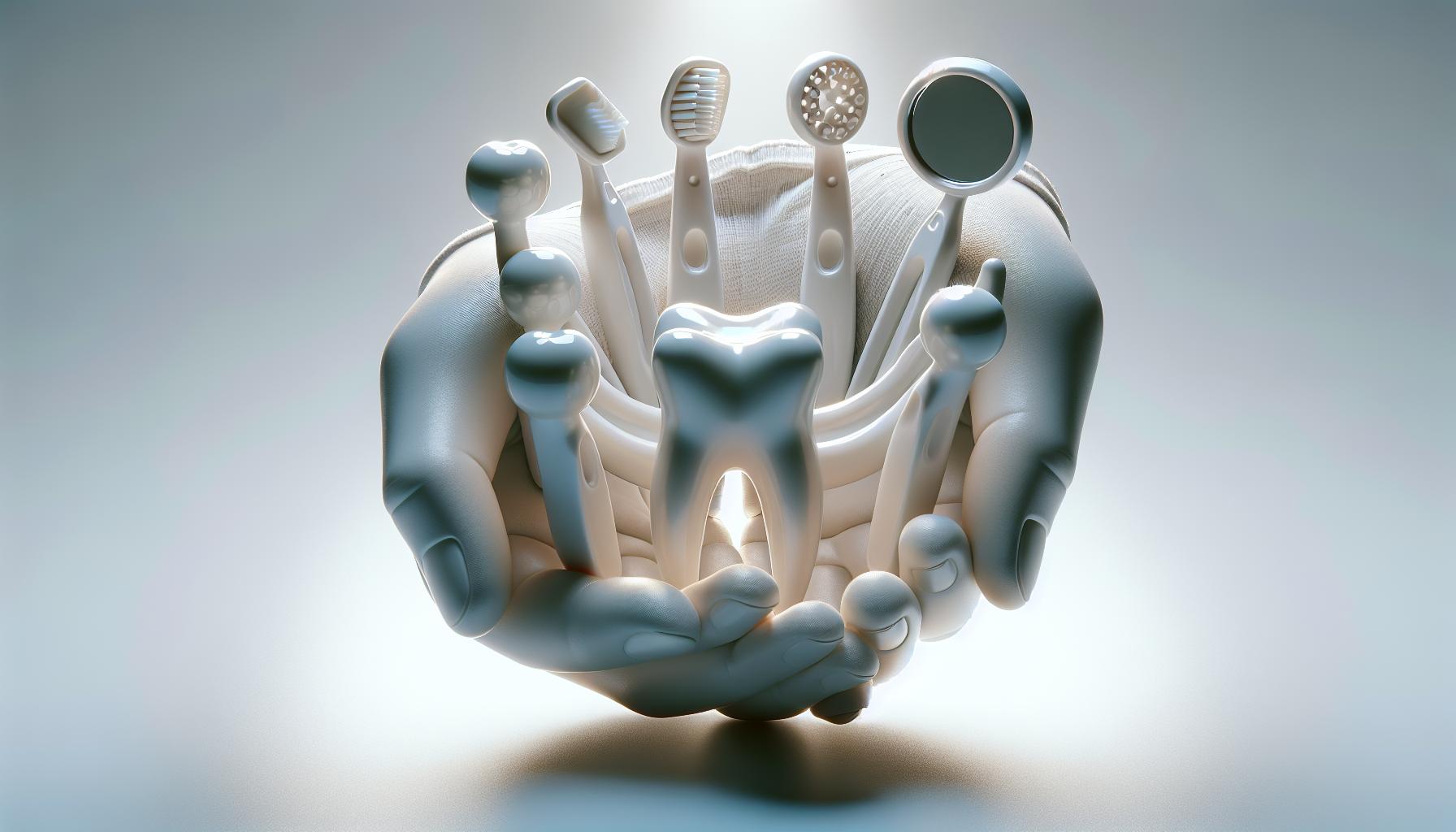teething can transform even the sweetest puppy into a nibbler, leaving owners grappling with unwanted bites. Understanding how to manage this natural phase is crucial for fostering a harmonious relationship with your furry friend. Discover gentle training methods that effectively curb biting behaviors, ensuring both comfort for your pup and peace of mind for you.
Understanding the Teething Process in Puppies
The teething phase in puppies can be likened to the tumultuous teenage years in humans—a time filled with discomfort, curiosity, and the occasional mischief. During this critical progress stage, which typically occurs when puppies are between three to six months old, they experience notable physical changes as their baby teeth fall out and adult teeth emerge. Understanding this natural process is vital for pet owners who want to effectively manage their puppy’s biting behaviors during this period.
The Teething Timeline
Puppies are born without teeth, but they begin to develop a set of 28 baby teeth by around three weeks of age. These small, sharp teeth, while initially a source of relief as they start chewing, can also cause discomfort as they become lose, making teething a challenging time for both the puppy and the owner.
- Three to Six Weeks: Baby teeth begin to erupt.
- Three to Four Months: The teething process starts, leading to loose baby teeth and discomfort.
- Four to Six Months: Adult teeth start to push through, causing further discomfort and the tendency to chew.
- Six Months: By this age, most puppies will have their full set of adult teeth, totaling 42.
Why Puppies Bite While Teething
The natural instinct to chew is heightened during this developmental phase. Puppies bite for a variety of reasons, and understanding these motives can help in implementing effective strategies on how to stop a dog from biting while teething using gentle training methods.
First, teething can cause pain and itchiness in a puppy’s gums, leading them to seek relief through biting and chewing. This behavior is not inherently aggressive; rather, it is a coping mechanism to relieve discomfort. additionally, puppies explore their world primarily through their mouths. Given their natural curiosity, they will often nip at hands, clothing, and other objects as part of their learning process.
Managing Teething Agitation
To soothe a teething puppy and curb excessive biting, owners can consider several practical strategies:
| Method | Description |
|---|---|
| Chew Toys | Providing a variety of durable chew toys can offer relief and distraction. |
| Frozen Treats | Offering frozen carrots or specially designed teething toys can definitely help numb sore gums. |
| Positive Reinforcement | Reward gentle play and discourage biting through praise and treats. |
| Time-Outs | Provide a gentle time-out when biting becomes too aggressive, teaching boundaries. |
By incorporating these strategies,pet owners can create a supportive environment for their puppies during the teething process. It allows for a smoother transition into adulthood while fostering a strong bond built on understanding and patience. Armed with knowledge and effective tools, owners can navigate the challenges of teething without resorting to punitive measures, ensuring that both puppy and owner enjoy this crucial stage of growth.
Signs Your Puppy is Teething and May Bite
Observing your puppy’s behavior is crucial, especially during the teething phase, which can be an uncomfortable and confusing time for both of you. Puppies, much like infants, experience discomfort as their teeth emerge, leading them to seek relief through gnawing and biting. Understanding the signs indicating that your puppy is teething—and may be more prone to bite—can help you mitigate issues and foster healthy chewing habits.
Common signs That Your Puppy is Teething
When puppies are teething, they typically exhibit a range of behavioral changes.Look for these indicators:
- Increased Chewing: A sudden preoccupation with chewing on various objects—whether appropriate toys or your shoes—is a classic symptom.
- Excessive Drooling: If you notice more moisture than usual around your puppy’s mouth, teething might be the culprit.
- Fidgety Behavior: Teething puppies may appear restless, pacing back and forth or seeming unable to settle down.
- Whining or Yipping: Vocalizations during playtime or when chewing can indicate that your puppy is in discomfort.
- Swollen Gums: Inspecting your puppy’s mouth might reveal red or swollen gums, signaling that teeth are on the verge of breaking through.
Understanding Your Puppy’s Need to Bite
As puppies are instinctively driven to explore their world through their mouths, teething intensifies this behavior. They might use biting as a mechanism to relieve discomfort or simply to engage and interact. However, this can escalate if not properly managed. It’s essential to recognize when playful nipping transitions into painful biting, especially when your puppy is in teething distress.
| behavior | Action to Take |
|---|---|
| Excessive chewing on furniture or shoes | Redirect to a suitable chew toy and praise appropriate behavior. |
| Vocalizations when biting | Use a firm “no” and provide an alternative toy to bite. |
| Restlessness and pacing | Incorporate physical activities, like brief fetch games or walks, to burn excess energy. |
By acknowledging these signs and understanding how to appropriately respond, you can help your teething puppy navigate this awkward growth period without straying into unwanted biting behaviors. Integrating gentle training methods, as highlighted in methods for stopping a dog from biting while teething, will not only soothe your puppy’s discomfort but also reinforce acceptable behavior.
Gentle Distraction Techniques to prevent Biting
Understanding Gentle Distraction Techniques
During the teething stage, puppies often resort to biting as a way to alleviate discomfort. Instead of viewing this behavior as a problem, it can be beneficial to redirect their energy and focus through gentle distraction techniques. These methods not only prevent biting but also create engaging and positive experiences for your puppy.
Engaging Toys and Chews
One of the most effective ways to divert your pup’s attention from nibbling on hands or furniture is by providing a variety of stimulating toys and chewables. Look for items that are designed to soothe teething discomfort while keeping your puppy occupied. Here are some suggestions:
- Rubber chew toys that can be filled with treats or peanut butter.
- Frozen washcloths can be soothing and are easy to prepare; simply dampen, freeze, and give to your puppy.
- Teething rings made specifically for puppies, which are soft yet durable enough to withstand their chewing.
Interactive Playtime
Investing time in interactive play can effectively mitigate biting tendencies. Incorporating games that require your puppy to think and engage actively can keep their minds off the discomfort of teething and reduce the urge to bite.
Structured Play Ideas:
- Fetch: Use a soft ball specifically designed for puppies that won’t hurt their teeth.
- Tug-of-war: Engage in light tugging games with a sturdy rope toy but ensure to teach your puppy gentle play and when to release.
- Puzzle toys: These can be filled with treats and challenge your puppy to work at them, helping take their mind off teething pain.
| Play Activity | benefits |
|---|---|
| Fetch | Encourages exercise and hunting instincts. |
| Tug-of-war | Enhances bonding and teaches impulse control. |
| Puzzle toys | Stimulates mental activity and reduces frustration. |
Positive Reinforcement and Training
Lastly, using positive reinforcement can significantly shape your puppy’s behavior while teething. Each time they choose a toy over your hand, reward them with praise or a small treat. This encourages them to repeat the behavior, reducing the likelihood of biting altogether.
By integrating these gentle distraction techniques into your pup’s routine, you can help ease their teething woes and foster a healthier way to cope with discomfort while building a strong bond that lasts a lifetime.
Safe Chewing Alternatives: toys for Teething Relief
The teething phase can be challenging for dogs and their owners alike. As puppies grow and their teeth emerge, they often experience discomfort, leading them to chew on anything within reach. This is why providing safe and suitable chewing alternatives is crucial in mitigating unwanted biting behaviors during this sensitive period. By selecting appropriate toys, you can not only ease your dog’s discomfort but also guide them towards positive chewing habits that deter them from nipping at your hands or furniture.
Choosing the Right Chew Toys
When selecting chew toys for your teething dog, consider materials that are durable yet gentle on developing teeth. Here are some highly recommended options:
- Rubber Toys: Tough and resilient, rubber toys can withstand vigorous chewing while also being gentle on the teeth.
- Frozen Chews: Filling a rubber toy with peanut butter or freezing a wet washcloth can provide soothing relief for sore gums.
- Natural Chews: Bully sticks or dental chews made from natural ingredients can be both satisfying and beneficial for dental health.
Incorporating these types of toys can be an effective strategy outlined in approaches for managing teething in dogs, as discussed in methods like *How to Stop a Dog From Biting While Teething: Gentle Training Methods*.
Making Chewing Positive
To further enhance the benefits of chewing during teething, establish a positive association with chew toys. When your puppy chooses to chew on their toy rather of your hands or furniture, reinforce this behavior with praise or a treat. This not only promotes the use of appropriate items but also builds a bond of positive reinforcement between you and your furry friend.
Safety First
Always prioritize safety by regularly inspecting chew toys for wear and tear. Replace toys that show signs of damage, as splintering materials can pose choking hazards or digestive issues. Dog owners can create a safe environment using tables with safe zones for teething, defining areas where their pets can explore without the risk of chewing on perilous items.
| Cue Type | benefits | Recommendations |
|---|---|---|
| Rubber Toys | Durable, flexible, and provides relief without damaging teeth | Kong Classic, Nylabone Healthy Edibles |
| Frozen Chews | Soothes gums and can be made with treats | Frozen Kong Fillers, Ice treats in a cloth |
| Natural Chews | Satisfies urge to chew and promotes dental health | Bully sticks, Antler chews |
By implementing these strategies during the teething phase, you can definitely help your puppy navigate their discomfort while reinforcing good chewing behavior that minimizes the chances of biting during this developmental milestone. Adopting a proactive approach as recommended in the methods of *How to Stop a Dog From Biting While Teething: Gentle Training Methods* ensures a happy and well-adjusted puppy.
Setting Boundaries: Teaching Your Dog what’s Off-Limits
Dogs are naturally curious creatures, and while it can be adorable, it can also lead to unwanted behaviors, especially during teething. Teaching your dog what is off-limits is crucial for creating a safe and harmonious environment. By setting clear boundaries, you not only help protect your belongings but also reinforce your role as a loving and responsible caregiver.
Understanding Your Dog’s Perspective
Dogs often explore their world through their mouths, particularly when they are teething.This natural behavior can lead to biting or chewing on inappropriate items, which is why understanding their perspective is essential. When you approach training, remember that your pet does not inherently know what is acceptable or unacceptable; it’s your job to teach them.
Effective Strategies for Boundary setting
To establish boundaries effectively, consider the following strategies:
- Consistent Commands: Use clear and consistent verbal commands like “no” or “leave it” whenever your dog reaches for something off-limits. Repetition will help your dog understand that these behaviors are not acceptable.
- Redirect Attention: When your dog begins to chew on furniture or other undesired items, redirect their attention to a suitable chew toy. This is particularly crucial during teething when they need to chew to relieve discomfort.
- Provide Alternatives: Ensure your dog has plenty of safe, engaging toys to chew on. This not only satisfies their urge to chew but also makes it less likely they will seek out household items.
- Use Baby Gates or Leashes: If your dog has a habit of gravitating toward certain forbidden areas, consider using baby gates or a leash to prevent access until they learn what is off-limits.
Implementing Gentle Training Techniques
When it comes to the gentle training methods described in “How to Stop a Dog From Biting While Teething,” positive reinforcement is key. Reward your dog with treats or praise whenever they obey a command to leave off-limits items alone. This reinforces good behavior and helps your dog learn through association.
it’s critically important to remember that patience and consistency are vital when teaching your dog boundaries. By employing these techniques, you create a positive learning environment that supports your dog’s development and minimizes unwanted biting and chewing during their teething phase. With time and dedication, your dog will learn to navigate their world with respect for your home and belongings.
The Role of Positive Reinforcement in Training
The success of training your puppy through teething and biting often hinges on one key tactic: positive reinforcement. This powerful approach not only fosters a healthy bond between you and your canine companion but also cultivates a learning environment that is both engaging and effective. Dogs, much like humans, thrive when they receive encouragement and rewards for desirable behaviors, leading to a strong motivation to repeat those actions in the future.
Understanding Positive Reinforcement
At its core, positive reinforcement involves encouraging good behavior by offering rewards, which can be treats, praise, or playtime. When training your dog not to bite during teething, this method becomes essential for steering them away from undesirable actions. As an example,whenever your puppy chooses to chew on a designated toy rather of your hands or shoes,you can promptly reward this behavior. This consistent reinforcement signals to them that choosing the appropriate item yields a pleasant outcome.
- Use High-Value Treats: Choose small, tasty treats that your puppy enjoys. this will help maintain their focus during training.
- Be Consistent: ensure the same rewards apply every time they exhibit the desired behavior. This helps reinforce learning.
- Timing is Everything: Deliver the reward immediately after the good behavior occurs to help your puppy make the connection.
real-World Applications of Positive Reinforcement
When teaching your dog how to stop biting while teething, consider how you frame their experiences. Such as, if your puppy nibbles at your fingers, redirect their attention to a plush toy. Once they start chewing on it, offer praise such as “Good girl!” or give them a treat.This not only corrects the behavior but also teaches them that toys are acceptable for chewing, while your hands are off-limits.
It’s also beneficial to create a structured environment that supports positive behavior. Designate specific play areas equipped with plenty of chew toys, so your puppy has no shortage of alternatives. Make a note of the times when teething behavior is more pronounced, and use that facts to prepare well-timed training sessions. This proactive approach maximizes the chances of your puppy associating positive behaviors with rewards, making the transition away from biting smoother.
| Behavior | Response | Reward |
|---|---|---|
| Chewing fingers or hands | Redirect to toys | praise and a treat |
| Chewing on designated toys | Continue play | excited verbal praise |
| Ignoring the urge to bite | Offer distractions | Treats and affection |
By consistently employing positive reinforcement techniques, you’ll not only reduce unwanted biting but also instill a deeper understanding in your puppy about acceptable behaviors. This nurturing approach lays the groundwork for a well-behaved and happy canine that knows how to express their teething discomfort without resorting to nipping.
When to Seek Professional Help for Teething Issues
Teething can be a challenging phase for both puppies and their owners.While it’s a normal part of development, some signs of distress can indicate that your furry friend may need additional support. Knowing when to seek professional assistance is crucial to ensure that your pup’s teething experience remains as smooth as possible.
Signs Your Puppy Needs Help
Recognizing the signs that indicate professional intervention is often the first step in helping your teething puppy. If you notice any of the following behaviors, it may be time to consult a veterinarian or a professional dog trainer:
- Excessive Chewing: If your puppy is chewing on furniture, shoes, or other household items despite having designated toys, this could signal distress.
- intense Irritability: A teething puppy may become more irritable than usual. If your dog’s temperament changes dramatically, this is a red flag.
- Persistent Biting: If the biting becomes aggressive rather than playful, it’s crucial to address this behavior promptly.
- Symptoms of Pain: signs such as whimpering, drooling, or reluctance to eat may indicate that your puppy is experiencing discomfort.
Response Strategies
Addressing your puppy’s teething problems early can prevent negative behaviors from escalating. Consider developing a plan that includes involvement from professionals, while also focusing on gentle training methods.
| Scenario | Recommended Action |
|---|---|
| Excessive chewing on furniture | consult a trainer for behavioral advice and provide sturdy chew toys. |
| increased fearfulness or aggression | Seek the guidance of a behaviorist to manage these emotional changes. |
| Persistent pain or health issues | Visit your veterinarian to rule out teething complications. |
Consulting a Professional: What to Expect
Seeking help from a dog trainer or veterinarian is a proactive approach. They can definitely help you understand the rooting causes of your puppy’s teething issues. During consultations, expect to discuss your dog’s behavior in detail, and you might be given tailored training methods to reinforce positive behaviors or specific strategies on how to stop a dog from biting during this transitional period. Many trainers utilize gentle training techniques that emphasize positive reinforcement, ensuring that your puppy feels secure throughout the teething process. By taking these steps, you are not only addressing immediate concerns but also setting your puppy up for long-term success and good behavior.
Creating a Calm Environment for Your teething Puppy
Creating a soothing atmosphere for a teething puppy can make all the difference during this challenging phase. Teething is a natural part of a puppy’s growth journey, but it can lead to discomfort and frustration for both the puppy and the owner. By understanding how to manage your puppy’s environment, you can help ease their discomfort and minimize the likelihood of unwanted biting behaviors as described in *How to Stop a Dog From Biting While Teething: Gentle Training Methods*.
Environment Setup: The Essentials
To create a calm and nurturing environment for your teething pup, focus on several key elements that can provide comfort and reduce stress:
- Designate a Safe Space: Establish a cozy corner with a soft bed or blanket where your puppy can retreat when feeling overwhelmed. Use calming toys specifically designed for teething to occupy their attention.
- Reduce Noise and Distractions: Limit loud noises and chaotic activities during teething periods. A quiet space allows your puppy to relax without external stressors, making the transition smoother.
- Use Calming Aids: Consider products like pheromone diffusers or calming music designed for dogs. These aids can definitely help foster a tranquil environment during tough teething spells.
Activities to Promote Calmness
Incorporating gentle, soothing activities into your puppy’s daily routine can significantly reduce their discomfort. Here are some approaches that align with gentle training methods:
- Interactive Play: Engage in gentle play sessions that do not involve tugging or roughhousing. Puzzle toys filled with low-calorie treats can keep them mentally stimulated while minimizing the chance of nipping.
- Regular Exercise: Physical activity helps expend excess energy that might otherwise contribute to anxiety or excitement. Short walks and quiet games of fetch can be a great way to tire out your pup without overstimulation.
- Gentle Massage: Provide a soothing massage to help relax tense muscles and alleviate any teething discomfort. A calm and loving touch can strengthen your bond while also placing your puppy in a more peaceful state.
Monitor and Adjust
It’s essential to observe your puppy’s responses and adjust their environment accordingly. Take note of what elements contribute to their comfort and which may lead to increased anxiety or irritation. Keeping track can lead to more effective management strategies, decreasing incidents of biting as they learn healthier outlets for their discomfort.
| Comfort Element | Effect on Puppet | Suggestions |
|---|---|---|
| Safe Space | Provides security | Soft bed, familiar blanket |
| Calming Toys | Eases teething pain | Rubber chew toys, frozen cloths |
| Calming Sounds | Reduces anxiety | Pheromone diffusers, tranquil music |
By implementing these strategies and understanding how to create a tranquil environment for your teething puppy, you are not only aiding in their comfort but also paving the way for effective training methods that discourage biting. This gentle approach will help them navigate the teething stage with greater ease,ultimately leading to a well-adjusted and less nippy adult dog.
Frequently asked questions
How to Stop a Dog From Biting While teething: Gentle Training Methods?
To stop a dog from biting while teething, use positive reinforcement and provide appropriate chew toys. This helps redirect their chewing instinct away from biting humans to acceptable objects.
Teething can cause discomfort for puppies,leading them to bite and chew more frequently. Establishing a routine with gentle training methods can be effective. Use toys designed for teething, and supervise playtime to ensure they don’t bite while being overly excited. Learn more about puppy training tips.
What is the best way to prevent a teething puppy from biting?
The best way to prevent a teething puppy from biting is to provide plenty of appropriate chew toys and engage them in regular, positive training sessions.
Puppies naturally want to chew to relieve discomfort, so consider offering soft, safe toys like rubber or plush options.Incorporating games that promote calmness, like fetch with a soft toy, can also reduce biting tendencies and help them focus on positive activities.
Why does my teething dog bite more than usual?
A teething dog bites more due to discomfort caused by new teeth emerging, prompting a natural instinct to chew and alleviate their pain.
During the teething phase, dogs experience gum sensitivity and discomfort. To help manage this, gauging their chewing behavior and adjusting the types of chew toys you offer can make a difference. providing a variety of textures can keep them engaged and soothe their gums.
Can I use treats to stop my dog from biting while teething?
Yes, using treats can help stop your dog from biting while teething when done with positive reinforcement techniques.
Rewards should follow appropriate behavior. For example,when your dog chooses their chew toy instead of biting you,provide a treat and praise them. This reinforces the idea that chewing on toys is preferable to biting humans.
How long does the teething phase last in puppies?
The teething phase in puppies typically lasts from about 3 weeks to 6 months of age, depending on the breed and individual development.
During this period, you can expect changes in biting behavior as teeth emerge and fall out. Consistent training and providing proper chew toys can ease this transition and alleviate some discomfort associated with teething.
What should I do if my teething puppy bites too hard?
If your teething puppy bites too hard, immediately say “no” in a firm but calm voice, and redirect them to an appropriate chew toy.
It’s essential to react consistently to reinforce the idea that biting humans is not acceptable.After redirecting, offer praise when they use their toy.This balanced approach ensures they learn the behavior you want while still addressing their natural teething instincts.
Are there professional services that can help with a biting puppy?
Yes, professional dog trainers and behaviorists can provide valuable assistance with a biting puppy, especially if home methods prove challenging.
Seeking the guidance of a professional can offer tailored advice and training techniques suited for your dog’s specific needs. They may suggest classes or one-on-one sessions to foster good habits during the teething phase.
In Retrospect
As you navigate the journey of helping your teething pup, remember that patience and understanding are your best allies. By employing gentle training methods, providing appropriate chew toys, and fostering positive reinforcement, you can effectively curb biting behaviors while building a strong bond with your dog. Each step you take not only aids in their development but also empowers you as a proactive pet owner. If you find challenges persist or if you’re uncertain at any stage, don’t hesitate to consult a professional trainer or veterinarian. Explore these strategies further, engage with fellow dog lovers, and share your experiences. Together, we can create a nurturing environment for our furry friends!









